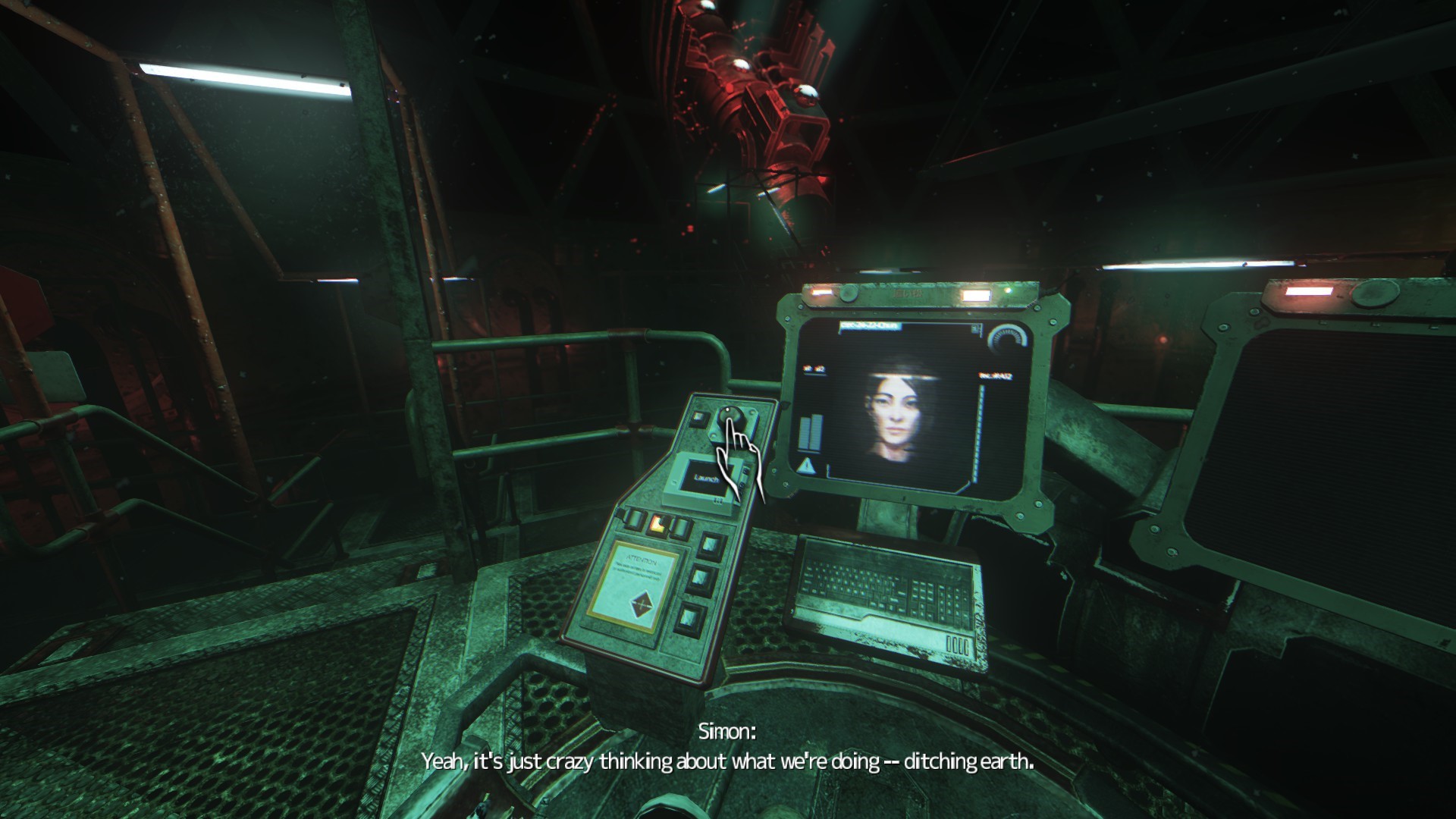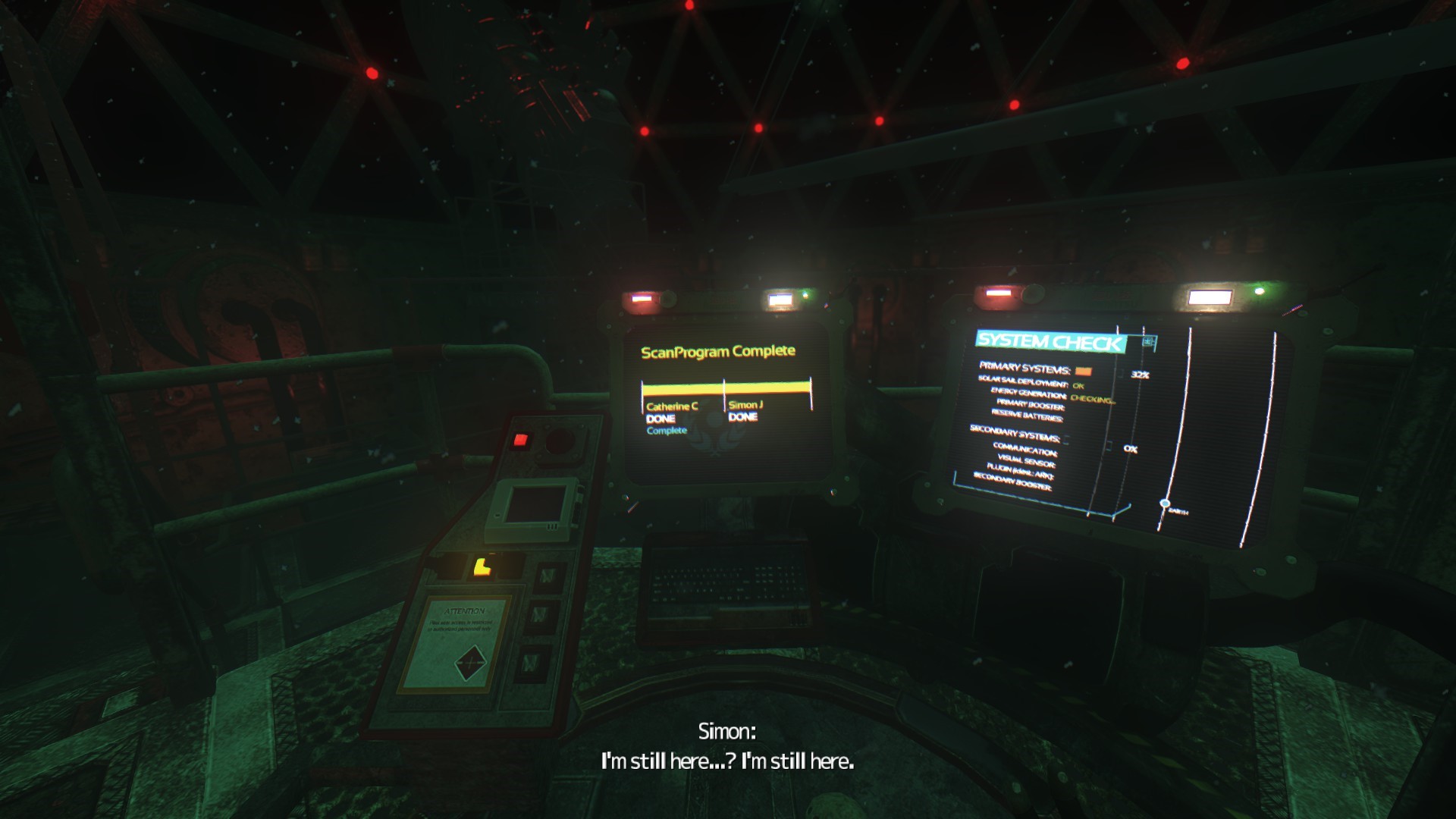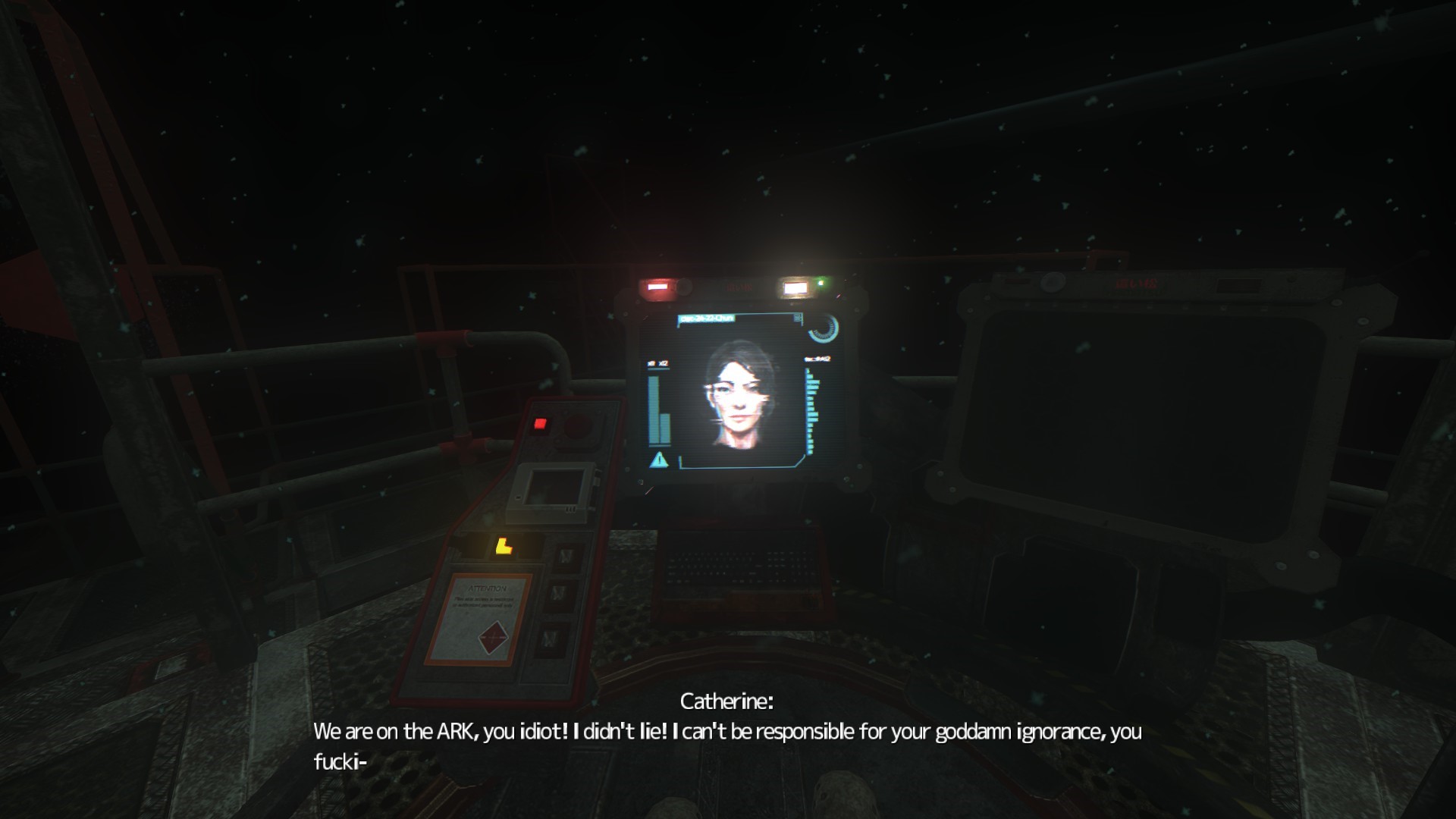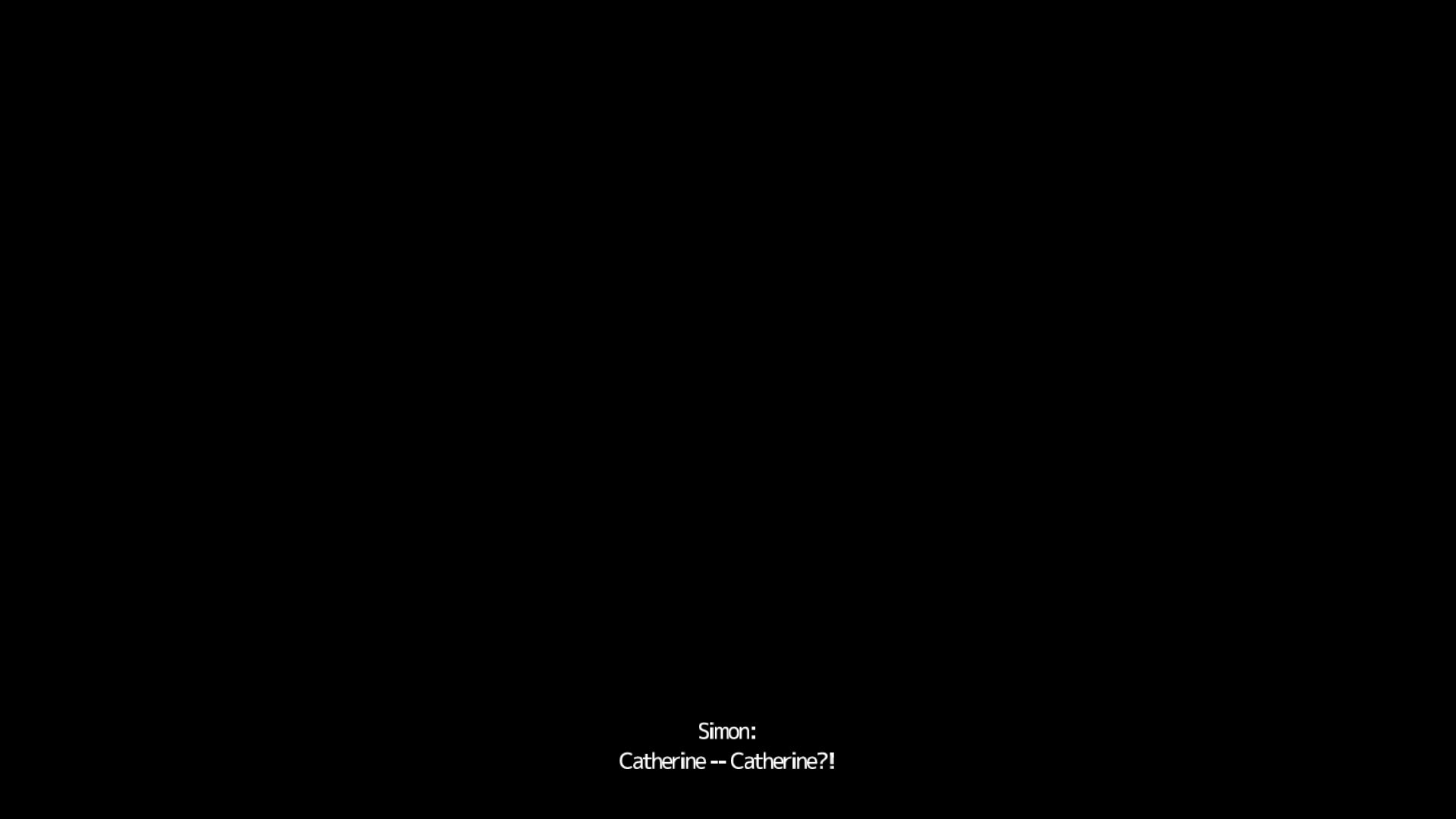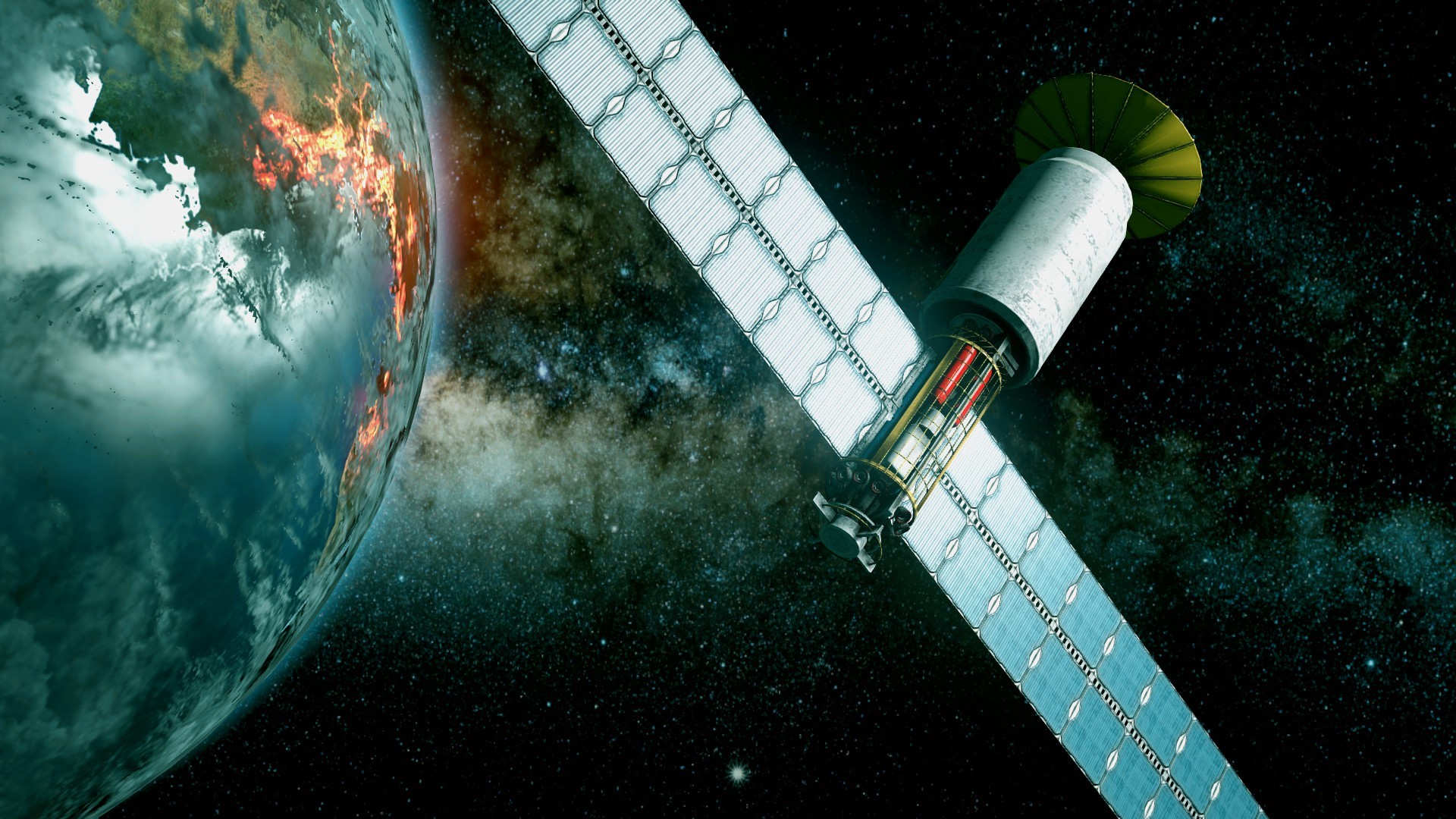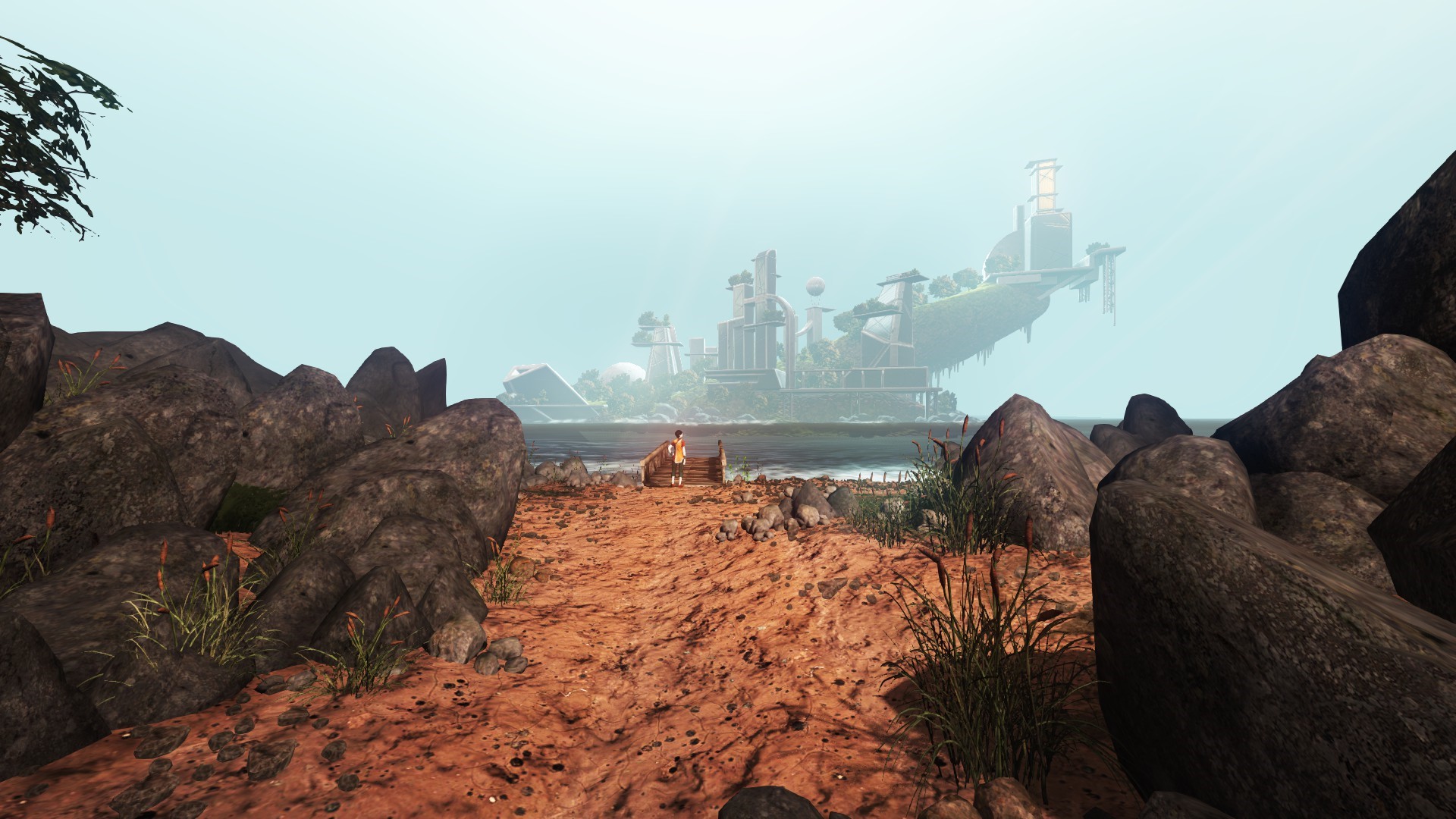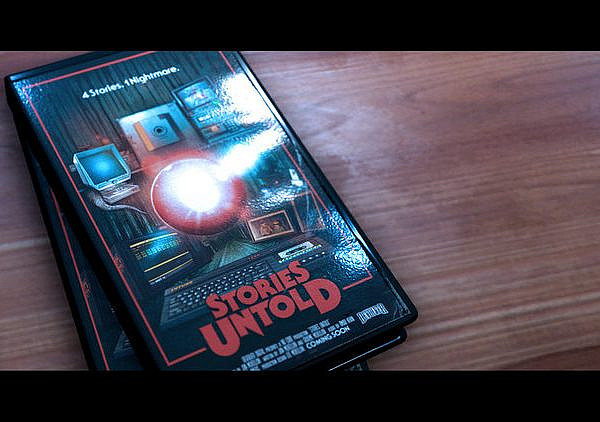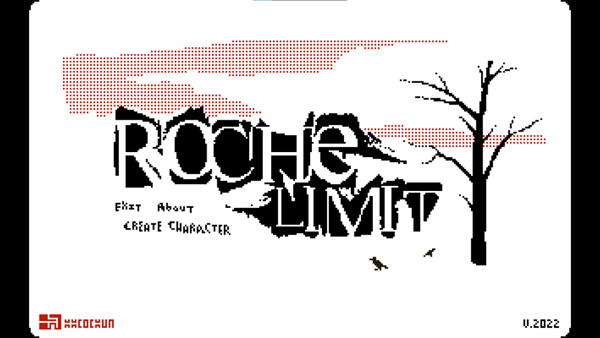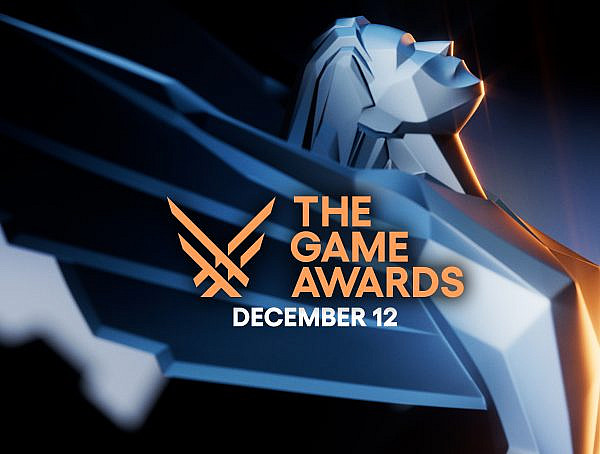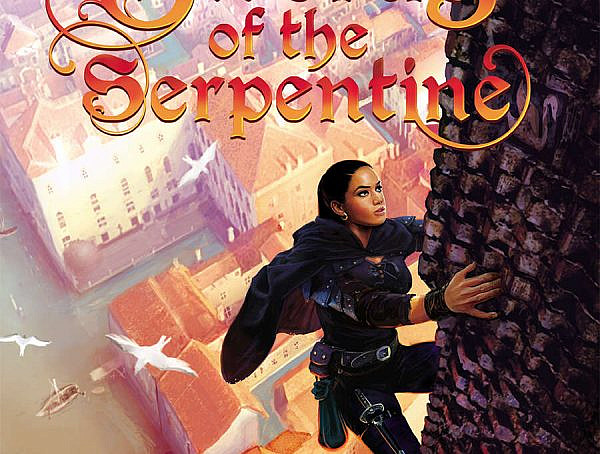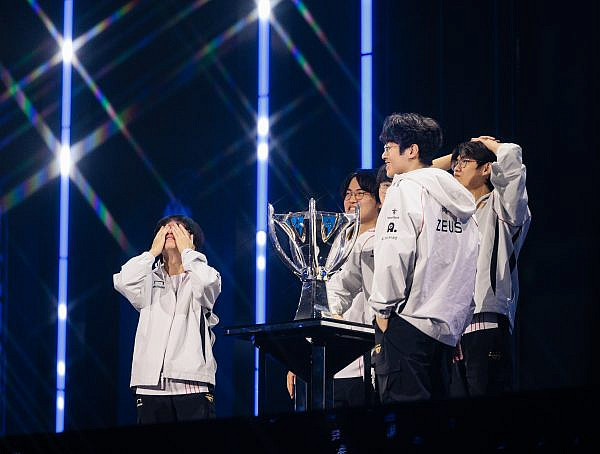This text contains major spoilers for the game SOMA.
SOMA ends both predictably and unpredictably, underlining its theme of what it means to be human.
In 2015, Frictional Games released their latest offering, the underwater sci-fi horror experience SOMA. From its promotional material to SOMA itself and the questions it raised, it has far surpassed their previous games and is among the best ones I have played. This is partly due to a focus on psychological, existential horror and not on the scare-focused chase-a-thons that have plagued many a horror game. One of the things that struck me the most, however, is the ending.
The journey of the protagonist, Simon, is nearly over. Having discovered that he is a robotic AI copy of his long dead self, and that his life in Toronto is a duplicate of the memories of the original Simon, he has roamed the underwater research facility PATHOS-II for days in search for answers. Aided by Catherine, another AI copy of one of the facility’s scientists, Simon has learned the truth about him suddenly waking up there: the world has essentially ended. All life on Earth’s surface has been decimated by a comet, turning everything but the oceans into a toxic wasteland, and the guardian AI of PATHOS-II, the WAU, has gone rogue, blindly adhering to its primary programming of protecting life by any means necessary. The WAU has killed most humans at PATHOS II, reanimating them as insane cyborgs or uploading AI copies of them into robots. The copies originated from the WAU’s brain scans taken from unsuspecting humans operating the “pilot seat” chairs to control PATHOS-II machinery. This initially inspired the original, human Catherine to create the ARK: an artificial reality capsule preserving human life for millennia beyond the human lifespan by storing copies of PATHOS-II staff into its virtual world.
Simon and Catherine take on one last effort to save humanity: uploading the AI copies of everyone in PATHOS-II into the ARK and launch it into space. At the core of SOMA is the “coin toss” – a false interpretation of the brain scan procedure, a belief that one could transfer their mind to the ARK. It implies that there is a chance to end up as the copy that gets to carry on. Catherine, as a copy of the original Catherine, understands its futility, yet utilizes the metaphor to spur Simon on to finish the mission. Simon, even though copied twice before in the game, believes himself to be the continuation of his original self instead of a copy with artificial memories. The player perspective also always shifts to the copy instead of remaining in the original.
Once the ARK launches, reality starts to sink in. Simon is still in the pilot seat controlling the space launch. Their minds were not uploaded to the ARK in the process. Simon is devastated and lashes out at Catherine, who loses her nerve, causing the device her AI was placed in to overload and leaving Simon in the darkness – the launch having drained the facility of most electricity. Just as Simon’s anger turns to fear, begging Catherine not to leave him alone, the credits start to roll. The player is left to process the events to the sound of fading beeping and the eerie ending theme.
The consequences are up to the player to imagine, amplified by cutting to credits quickly enough not to let them come to grips with the situation until then. Will Simon go insane, head back to meet one of his former copies – their life or death decided by the player earlier in the game – to rebuild some sort of community, or perhaps head to the surface? The player might predict the coin toss twist, but it is still shocking. The gameplay foreshadows this: Simon makes nervous remarks and Catherine hurries him up if the player hesitates to launch the ARK. Simon embracing the coin toss is understandable, and, ironically, very human in clinging to hope, unable to accept reality. Even more ironic is his “They’re not us!” outburst about the copies in the ARK, since that is what he himself is: a copy. Simon’s breakdown and the shift from anger to panic through him lashing out at his only companion and mental lifeline are heartbreaking to witness.
Then there is the ARK. After the credits, Simon wakes up in a cave, walks out, and realizes that he made it to the ARK. He finally meets Catherine in the (virtual) flesh. SOMA then ends for the second time, finishing with a clip of the ARK in space. Even though the double ending slightly hinders the finality of the original one, I find it separate enough from that, allowing the player enough time to recover.
SOMA’s ending feels impactful and deliberate regardless of it arguably hedging its bets with the double ending. To me, it reinforces the entire coin toss concept and adds the perfect touch to the ending. From the excellent pacing to embodying the theme of facing the limitations of both technology and the human psyche, it gains even more impact from its predictability and ends the game on a powerful note.
You might also like
More from Features
Game Awards – Celebration of talent or a Marketing Extravaganza?
The Game Awards 2024 is over and the winners are announced. However, are they still following the same pattern that …
Worlds in a Finnish Theater: League Finals, Community, and Döner Kebab
I travelled to Helsinki to watch League finals in a cinema, and it was worth it. #leagueoflegends #esports #community #worldfinals







